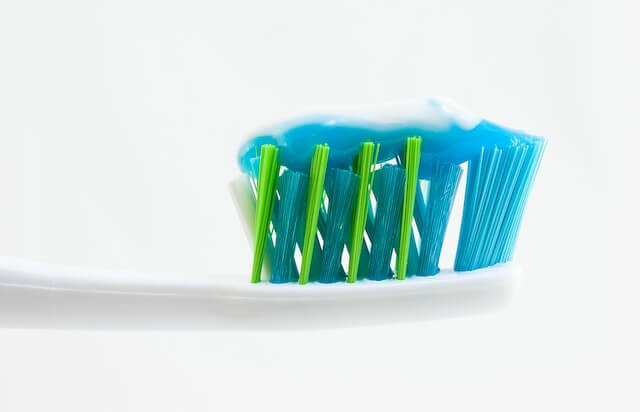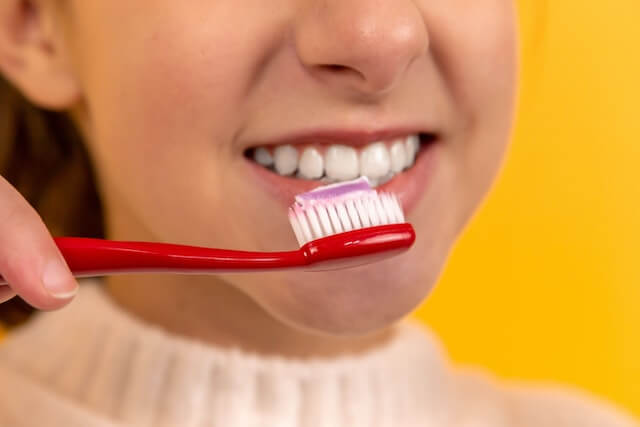Many people may have noticed that in advertisements, individuals with bright, white smiles promote toothpaste with fluoride. This ingredient is known to strengthen tooth enamel and protect against tooth decay.
However, those who remember their school chemistry lessons may hesitate to purchase such a product. For them, the mention of fluoride may be seen in a negative light, as pure fluoride is actually a poison.
Fortunately, the reality is not as dire as it may seem. When it comes to toothpaste, the term “fluoride” is actually incorrect. The products contain fluorides, which are compounds made up of several elements.

Numerous studies have shown that, when used in moderation, these compounds are not harmful to human health. Toothpastes contain only minimal amounts of fluorides, so it would require consuming more than one tube at a time to cause any harm. In fact, any negative consequences are unlikely to be caused by fluoride itself.
That is why many leading companies around the world include fluoride as an ingredient in their toothpaste and other products. Fluoride helps prevent harmful bacteria from destroying tooth enamel. Without enough fluoride, enamel becomes weak and susceptible to damage. This ingredient is added to products for both adults and children, with the only difference being the percentage of fluoride content.
How does fluoride benefit our teeth?
1. Acts as a preventive agent against oral diseases and tooth decay.
2. Strengthens tooth enamel.
3. Cleans the hard tissues of the teeth.
4. Has an antibacterial effect.
What issues can fluoride toothpaste help solve?
Now that we have addressed the concerns regarding the potential dangers of fluoride toothpastes, it is important to consider the potential benefits of using these products. What problems can they help solve?
Toothpaste with fluoride is designed to:
1. Reduce the risk of tooth decay. Fluoride prevents bacteria from damaging tooth enamel, significantly reducing the risk of developing cavities and the need for subsequent treatments.
2. Remineralize weakened enamel. Fluoride contributes to the restoration of weakened and worn tooth enamel, making it less sensitive to external factors.
3. Decrease tooth sensitivity. Fluoride helps restore thin or damaged enamel, reducing sensitivity to temperature changes and certain foods.
4. Increase strength. During the growth of teeth, fluoride helps strengthen the enamel. Even after the teeth have fully grown, the enamel remains strong and resistant to pathogens, acidic environments, and sugar. Therefore, it is recommended to start brushing children’s teeth at an early age.
5. Freshen your breath. Bad breath is often caused by microorganisms that thrive in a moist environment. Fluoride effectively neutralizes these microorganisms, eliminating unpleasant odors. Additional components in toothpaste provide fresh breath.
Disadvantages of fluoride
What are the potential dangers of fluoride? Considering the toxicity of this chemical component, it is important to maintain an optimal balance of its concentration in the body. Fluoride can accumulate in the tissues, leading to intoxication. Excess fluoride can be obtained not only from toothpaste but also from drinking water, food, and vitamins.
Metabolic disorders and working in harmful industries can also contribute to fluoride intoxication, resulting in the following unpleasant consequences:
- Deterioration of hair and nails.
- Slowed metabolism.
- Changes in the composition and properties of the blood.
- Formation of fluorosis, which is the chronicization of fluoride intoxication.
- Long-term excessive fluoride consumption can lead to generalized fluorosis of the skeletal bones, osteoporosis, and malignant bone tumors.
On the other hand, a deficiency of fluoride is often caused by decreased concentrations in drinking water or disrupted fluoride metabolism in the body. This deficiency can lead to chronic and widespread dental decay, darkened tooth enamel, and impaired bone mineralization in children. In adults, the risk of osteoporosis increases.
Potential Risks
Harm from sodium fluoride occurs when there is an excess of this trace element in the body. Overdosing can lead to the development of fluorosis. Toothpaste with fluoride contributes to the regular accumulation of fluoride in the body. Although most of it is deposited in bone tissue, a small portion can accumulate in the central nervous system and glands of internal secretion.
Certain individuals, such as those with metabolic disorders, are more at risk. It is sufficient to use a pea-sized amount of toothpaste to clean the teeth, with a total cleaning time of 1 minute. After brushing, it is important to thoroughly rinse the mouth.
How to Choose the Right Fluoride Toothpaste
With the wide array of toothpastes available on the market today, it can be challenging to select the most suitable fluoride toothpaste. Here are some factors to consider when making your choice.
Composition: Take the time to carefully examine the ingredients of the toothpaste. Look for one that contains tin fluoride, as it has been extensively studied and proven to be safe.
Additional Components: Many toothpaste manufacturers include natural components that freshen breath, kill germs, and provide a pleasant flavor for an extended period of time.

Manufacturer: It is advisable to purchase toothpaste from reputable manufacturers who have their own laboratories and adhere to global quality standards.
Beware of Counterfeits: Be cautious of counterfeit products that mimic well-known brands. These pastes may contain harmful substances, so it is essential to check the country of manufacture.
Price: Quality toothpaste is unlikely to be overly cheap, as it requires specific ingredients and processes to have a positive effect on oral hygiene.
Dentists’ Recommendations for Using Fluoride Toothpaste
1. Brush your teeth twice a day.
2. Rinse your mouth with water after eating.
3. In the early stages of caries, apply a small amount of fluoride toothpaste to the affected enamel.
4. Choose toothpaste suitable for your age.
5. Use only a pea-sized amount of toothpaste for each brushing session. Apply it to the surface of your teeth with a toothbrush, gently massaging the enamel while avoiding spitting out the paste. Rinse your mouth with water after brushing. Refrain from eating or drinking for thirty minutes after cleaning.
Proper use of fluoride toothpaste can help prevent fluorosis. When fluoride levels in the body are excessively high, consider using toothpaste containing hydroxyapatite.
Conclusion
Fluoride toothpastes have undergone extensive research and are considered safe when used appropriately. Follow dentists’ recommendations, and you can benefit from their therapeutic and preventive effects on dental health.


